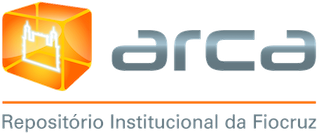Please use this identifier to cite or link to this item:
OPTIMIZATION OF ONCOLOGICAL 18F-FDG PET/CT IMAGING BASED ON A MULTIPARAMETER ANALYSIS
Author
Affilliation
São Rafael Hospital. Nuclear Medicine Department. Salvador, BA, Brasil / Universidade Federal de Pernambuco. Hospital das Clínicas. Nuclear Medicine Department. Recife, PE, Brasil
São Rafael Hospital. Nuclear Medicine Department. Salvador, BA, Brasil / Hospital das Clínicas da Universidade Federal de Bahia/Ebserh, Salvador 40110-060, Brazil
São Rafael Hospital. Nuclear Medicine Department. Salvador, BA, Brasil / Hospital Universitário Professor Alberto Antunes/Ebserh. Nuclear Medicine Department. Maceió, AL, Brasil
Universidade Federal de Sergipe. Department of Physics. São Cristóvão, SE, Brasil
Yale University School of Medicine. Department of Diagnostic Radiology. New Haven, Connecticut / University of Pisa. School of Engineering. Pisa, Italy
Fundación Centro Diagnóstico Nuclear, Buenos Aires, Argentina
São Rafael Hospital. Centro de Biotecnologia e Terapia Celular. Salvador, BA, Brasil
São Rafael Hospital. Centro de Biotecnologia e Terapia Celular. Salvador, BA, Brasil / Fundação Oswaldo Cruz. Centro de Pesquisas Gonçalo Moniz. Salvador, BA, Brasil
São Rafael Hospital. Nuclear Medicine Department. Salvador, BA, Brasil / Hospital das Clínicas da Universidade Federal de Bahia/Ebserh, Salvador 40110-060, Brazil
São Rafael Hospital. Nuclear Medicine Department. Salvador, BA, Brasil / Hospital Universitário Professor Alberto Antunes/Ebserh. Nuclear Medicine Department. Maceió, AL, Brasil
Universidade Federal de Sergipe. Department of Physics. São Cristóvão, SE, Brasil
Yale University School of Medicine. Department of Diagnostic Radiology. New Haven, Connecticut / University of Pisa. School of Engineering. Pisa, Italy
Fundación Centro Diagnóstico Nuclear, Buenos Aires, Argentina
São Rafael Hospital. Centro de Biotecnologia e Terapia Celular. Salvador, BA, Brasil
São Rafael Hospital. Centro de Biotecnologia e Terapia Celular. Salvador, BA, Brasil / Fundação Oswaldo Cruz. Centro de Pesquisas Gonçalo Moniz. Salvador, BA, Brasil
Abstract
Purpose: This paper describes a method to achieve consistent clinical image quality in 18F-FDG
scans accounting for patient habitus, dose regimen, image acquisition, and processing techniques.
Methods: Oncological PET/CT scan data for 58 subjects were evaluated retrospectively to derive
analytical curves that predict image quality. Patient noise equivalent count rate and coefficient of
variation (CV) were used as metrics in their analysis. Optimized acquisition protocols were identified
and prospectively applied to 179 subjects.
Results: The adoption of different schemes for three body mass ranges (<60 kg, 60–90 kg, >90 kg)
allows improved image quality with both point spread function and ordered-subsets expectation
maximization-3D reconstruction methods. The application of this methodology showed that CV
improved significantly (p < 0.0001) in clinical practice.
Conclusions: Consistent oncological PET/CT image quality on a high-performance scanner was
achieved from an analysis of the relations existing between dose regimen, patient habitus, acquisition,
and processing techniques. The proposed methodology may be used by PET/CT centers
to develop protocols to standardize PET/CT imaging procedures and achieve better patient
management and cost-effective operations.


Share